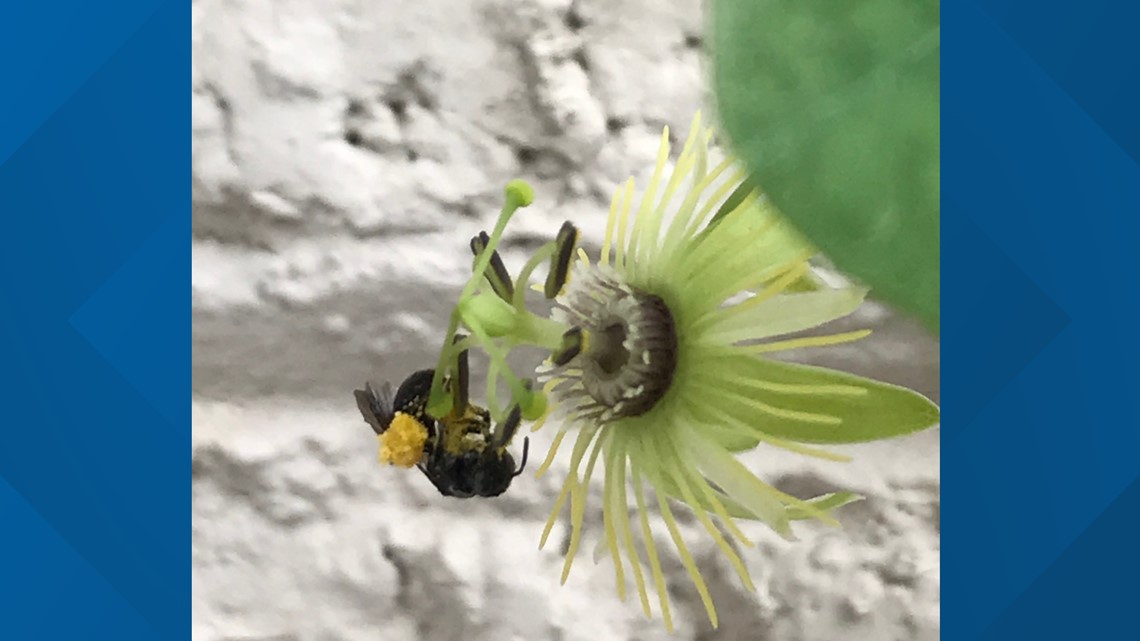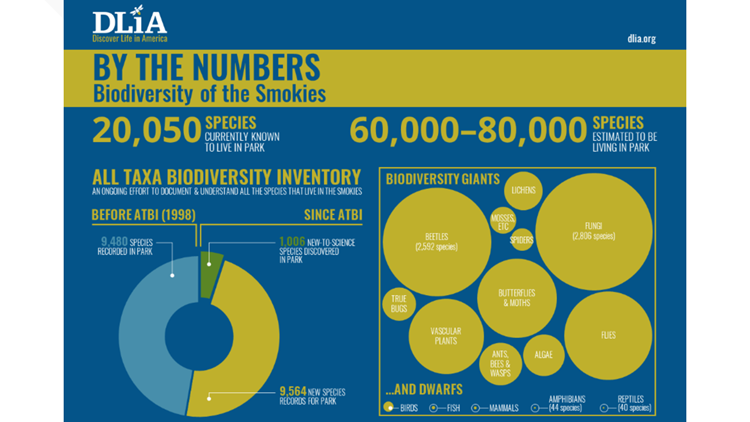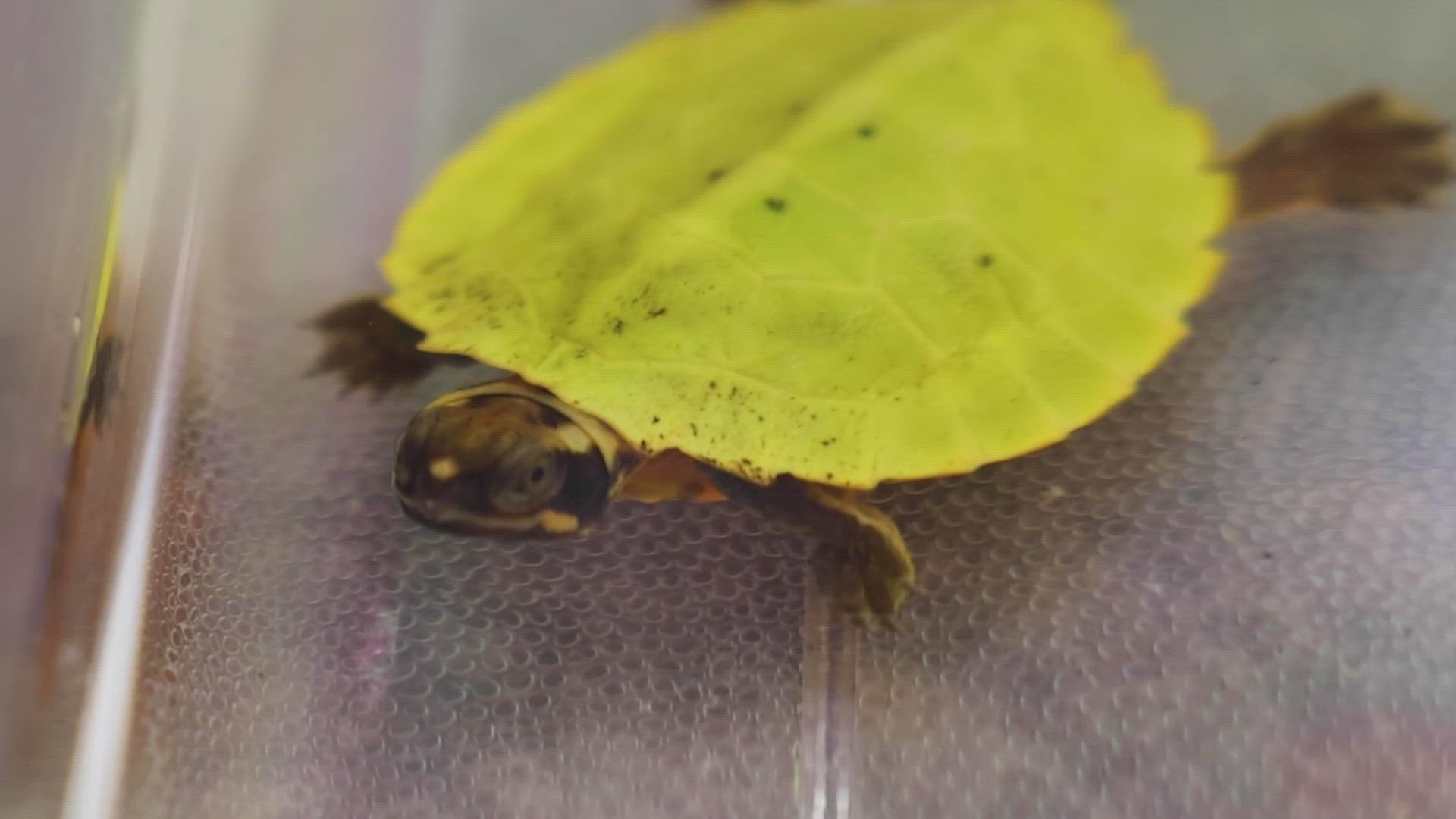KNOXVILLE, Tenn. — The Great Smoky Mountains National Park made a big announcement Thursday: it has reached a "biodiversity milestone" with the documentation of 20,000 species of animals, plants and other organisms discovered in the park.
Scientists from all around the world helped find and document all these different species, the park said in a news release.
"Reaching this milestone is a testament to the curiosity, tenacity and dedication of the biological community," Cassius Cash, the superintendent of the Great Smoky Mountains National Park, said in the release. "Each year, we have scientists who share their time and expertise to help us better describe, understand and protect the wonders of the Smokies."
How have they tracked all these species? Through an All Taxa Biodiversity Inventory, or ATBI for short. The project is managed by Discover Life in America (DLiA) and studies the diversity of life in the Smokies, the release said.
“This is a remarkable achievement—cataloging so many species in this relatively small region!” said Dr. Will Kuhn, the director of science and research for DLiA. “But, we think that there are still tens of thousands of species waiting to be discovered in the park. We’ve still got work to do!”


The ATBI has documented 1,006 species in the park that are completely new to science in its 21 years of existence, according to the release. It has also recorded more than 9,500 known species within the park.


"Among the newest species records in the park are the giant bark aphid (Longistigma caryae), which is the largest aphid in the US; the Blue Ridge three-lobed coneflower (Rudbeckia triloba var. rupestris), a handsome wildflower native to Kentucky, Tennessee, and North Carolina; the frosted elfin butterfly (Callophrys irus), a rare butterfly whose caterpillars feed on lupine and indigo; and the yellow passion flower bee (Anthemurgus passiflorae), which exclusively pollinates the small flowers of the yellow passion flower," the release said. "In addition, the nine-banded armadillo (Dasypus novemcinctus) was recently documented in the park for the first time."


DLiA and park staff have invited visitors to participate in collecting information for the ATBI, too. It's as easy as snapping a picture on your phone, and you'll be collecting and recording species location data.
How can you do that? By using a citizen science smartphone app, iNaturalist. Species observations recorded by visitors on the app will be part of the Species SnapIt & MapIt project.
Related coverage:



